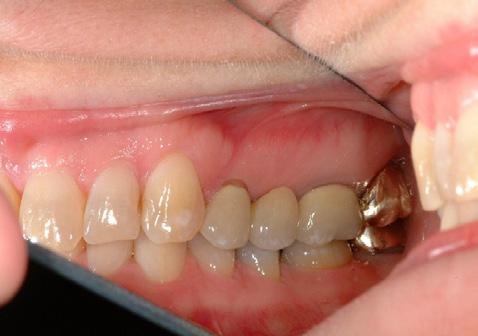
3 minute read
About Your Fees Hygiene Hot Spot-Just Because It's Green Doesn't Mean It's Guacamole
By: Dawn Wilson, RDH
Advertisement
He said, “It looked like guacamole, I swear!” I responded, “But you were in a sushi restaurant.”
True story! He thought the green ball of goodness was guacamole and put the whole thing in his mouth. Ouch! An easy mistake to make if you’re a first timer to a sushi house, and especially if you live in the South where Tex-Mex is all about the green. Lesson learned. For many of us, periodontal disease is often defined by one characteristic: the number. Just as something green is not always guacamole, not all 6mm pockets need scaling and root planing (SRP) or laser therapy. No two pockets are ever alike. Ever. A 6mm pocket on Mary is not the same as a 6mm pocket on Joe. It’s important to assess the whole situation to find out the culprit before deciding on the best treatment for a patient. Where we can get lost is focusing on the number (6mm) rather than on all the factors surrounding that number, which tells more of the story. Is it an active disease or a functional condition that’s causing the pocket? What color is the tissue? Is it bleeding? Is there inflammation in the area? Is there a restoration infringing on the biological width? It’s easy to see a deep pocket and automatically want to treat with SRP or laser therapy when neither is warranted. It can also be frustrating when we perform SRP and nothing changes. Ask yourself (and the patient): what’s behind the number? Many times it’s not as it seems, just like the green ball of goodness in a sushi restaurant. Pocket depth is our bread and butter. It’s where we live. The numbers make up our road map; they help us navigate a patient’s mouth. But more important is knowing the cause, which will help determine how best to address and guide our treatment. Just because it’s deep doesn’t mean it needs extraordinary treatment. It would be safe to say that most perio problems are due to a lack of oral care but there are many cases involving bone loss that are not due to a disease state but rather to a functional condition. We can better understand a patient’s periodontal needs by focusing not the number but on the cause.
While I’ve practiced dental hygiene in both general dentistry offices and periodontal offices, working in perio is my preference. When people ask me the difference between being a hygienist in a perio practice versus a general practice I just say, “It’s like the difference between washing a VW Bug and a school bus. There’s a lot more surface area and more nooks and crannies to clean.”
Reimagining tomorrow, together
You can count on the ADA to help you tackle current challenges and achieve your long-term goals. Introducing the new ADA Accelerator Series — your hub for financial, leadership and work/life balance tools. Together, we’re reimagining a better tomorrow. ABOUT THE AUTHOR: Dawn Wilson RDH, BA is a 1993 graduate of the Tulsa Community College dental hygiene program. Since graduation , she’s worked clinically overseas in Doha, Qatar and all over Oklahoma in both general practice and (since 2005) periodontics. She and her husband Tim celebrated their 25th wedding anniversary earlier this year with a trip to their favorite beach. When they aren’t traveling, they stay active volunteering and fostering dogs for Lab Rescue of Oklahoma and have two fur babies of their own. Currently residing in Stillwater, they are both avid OSU fans and very happy that football has started up again!
Hit the Accelerator at ADA.org/AcceleratorSeries









